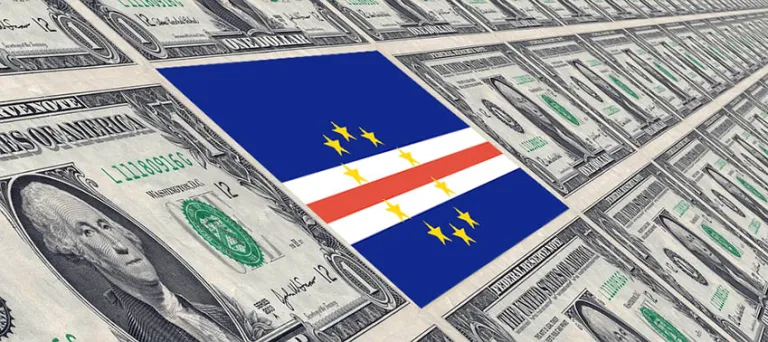Cape Verde’s Growth Surges, but Fiscal Anchors Face a Test
Cape Verde’s GDP grew 6.2 % in Q2 2025, supported by tourism and public investment. Debt ≈ 122 % of GDP, inflation 2.9 %, policy rate 3.5 %, and BVC market cap ≈ CVE 60 bn. The CVE-EUR peg holds, but global liquidity tightening (DXY ≈ 105.7, US10Y ≈ 4.35 %) keeps risks elevated.

Cape Verde’s economy expanded by 6.2 percent year-on-year in Q2 2025, confirming its status as one of West Africa’s most resilient post-pandemic performers. According to the National Institute of Statistics (INE), output growth was driven by construction (+11 percent), accommodation and food services (+9 percent), and a rebound in agriculture after two years of drought. On an annualized basis, GDP is projected near CVE 304 billion (≈ USD 2.8 billion), bringing the island’s output back above its pre-COVID trend.
The expansion reflects both public-investment momentum and tourism recovery. Visitor arrivals surpassed 1.1 million in the first half of 2025, nearly matching the 2019 peak, while capital spending under the National Development Plan (2022-2026) rose 7 percent in real terms. Yet analysts caution that growth remains policy-led rather than productivity-driven. Fiscal expenditure, not private-sector dynamism, continues to anchor domestic demand.
Inflation averaged 2.9 percent, largely contained by the CVE-EUR peg (≈ 110.27) that ties Cape Verde’s escudo to the euro. The Bank of Cape Verde (BCV) maintained its policy rate at 3.50 percent, prioritizing exchange-rate stability over stimulus. That peg remains the country’s credibility pillar but also limits its monetary flexibility: unlike peers such as Ghana (MPC = 29 percent) or Nigeria (24.75 percent), BCV cannot fine-tune inflation expectations through rate adjustments; liquidity is managed via open-market operations.
The fiscal picture is cautiously improving. The 2025 budget deficit is projected around 4.4 percent of GDP, down from 5.1 percent in 2024, helped by stronger VAT receipts and a tourism-related import surge. Public debt hovers near 120–122 percent of GDP, down from 126 percent in 2023, with ≈ 70 percent on concessional terms from multilaterals such as the IMF, World Bank, and AfDB. That concessional mix keeps debt-service costs manageable—interest payments consume about 11 percent of revenue—yet underscores dependence on external lenders.
The financial sector shows similar duality: liquid and profitable but shallow. Total assets in the Bolsa de Valores de Cabo Verde (BVC) stand around CVE 60 billion (≈ USD 570 million), equal to barely 20 percent of GDP. Market turnover remains thin—daily volumes average under USD 40 thousand—but sovereign-bond yields near 5.7 percent provide positive real carry relative to the Eurozone 10-year (DE10Y ≈ 2.4 percent) and the U.S. 10-year (US10Y: ^TNX ≈ 4.35 percent). The peg shields Cape Verde from Federal Reserve volatility, though a persistently strong Dollar Index (DXY: DX-Y.NYB ≈ 105.7) still raises import costs for dollar-denominated goods.
Externally, resilience depends on tourism, remittances, and concessional credit. Remittance inflows—roughly 12 percent of GDP—continue to offset the structural trade deficit. Foreign-exchange reserves stand near EUR 760 million (≈ 7 months of imports), keeping the peg credible. Yet with euro-area demand softening and energy imports rising, Cape Verde’s current-account deficit will likely widen toward 9 percent of GDP by year-end, according to IMF projections (IMF 2025 ECF Review).
Comparatively, the archipelago outperforms most ECOWAS peers. The region’s average growth sits around 3.8 percent (AfDB 2025 Outlook), while inflation elsewhere remains double-digit. Within the West African Monetary Zone, only Senegal (+7 percent) posts stronger expansion, and at far higher fiscal cost. Cape Verde’s mix—moderate growth, low inflation, fixed exchange rate—resembles Mauritius more than mainland Africa, but its small market base makes each exogenous shock proportionally larger.
Structural reforms remain pivotal. Diversifying exports beyond tourism and light manufacturing will determine whether 6 percent growth is cyclical or durable. The government’s Green Transition Agenda 2030 and the upcoming “Blue Economy Fund” (€120 million) with EU support could generate new external financing lines but also test absorption capacity.
For global investors, the signal is mixed. Cape Verde offers macroeconomic predictability and a concessional debt cushion, but lacks market depth and scalability. Its bonds trade regionally through the UMOA-Titres platform, typically at 6–7 percent yields, competing with Benin and Côte d’Ivoire’s issues (EMB: NYSEARCA). With debt sustainability improving and inflation anchored, Cape Verde’s risk premium could compress by 50–70 basis points over the next year—if fiscal consolidation holds and tourism momentum endures.
In short, Cape Verde’s 6.2 percent growth is real, but so are its constraints. The economy has mastered stability, not yet scale. For frontier-market investors tracking small-island models, the takeaway is clear: credible pegs buy time—but not transformation.





